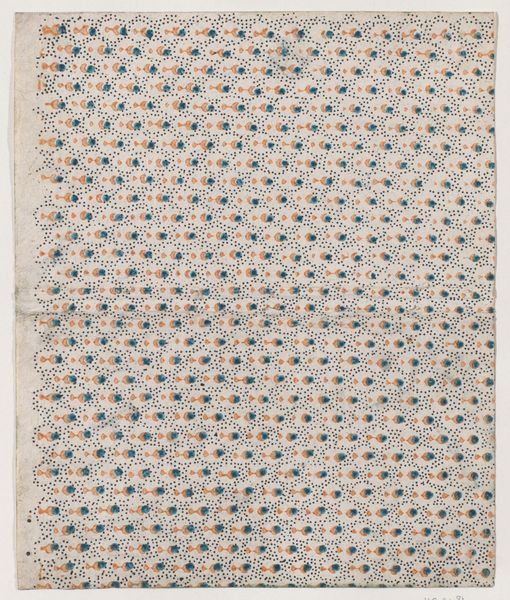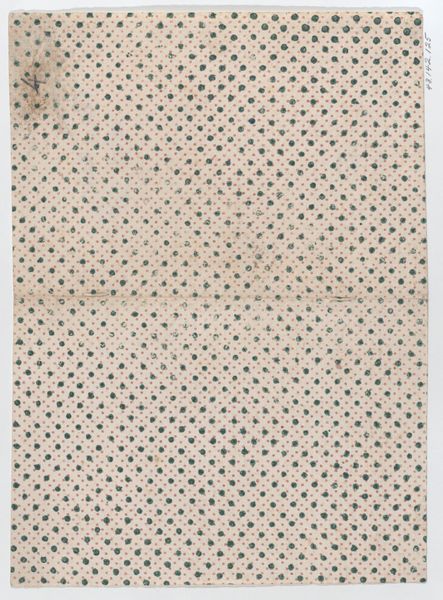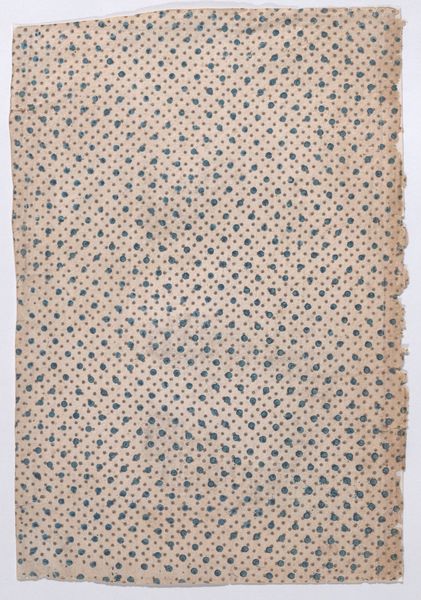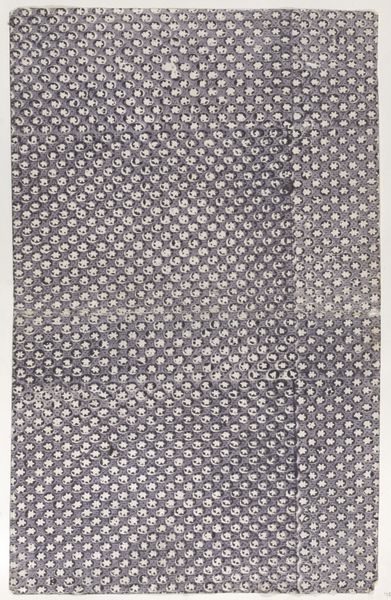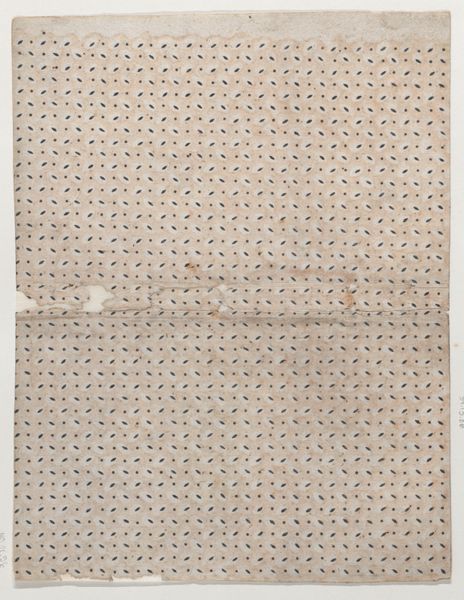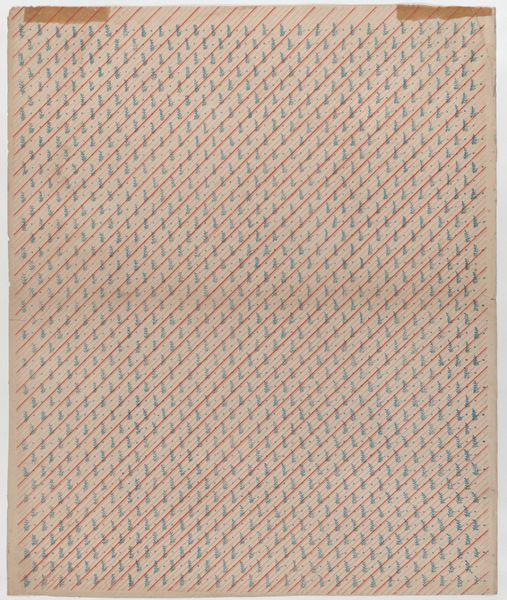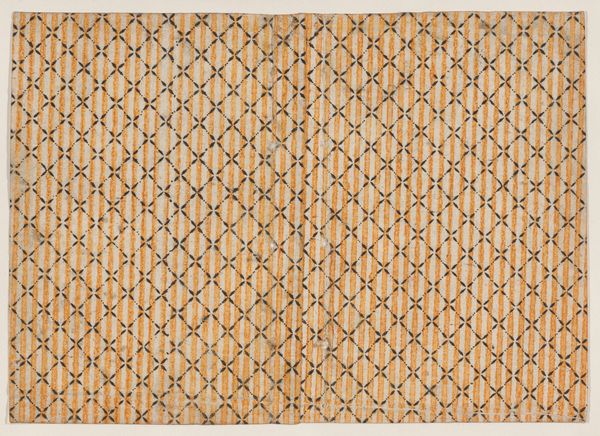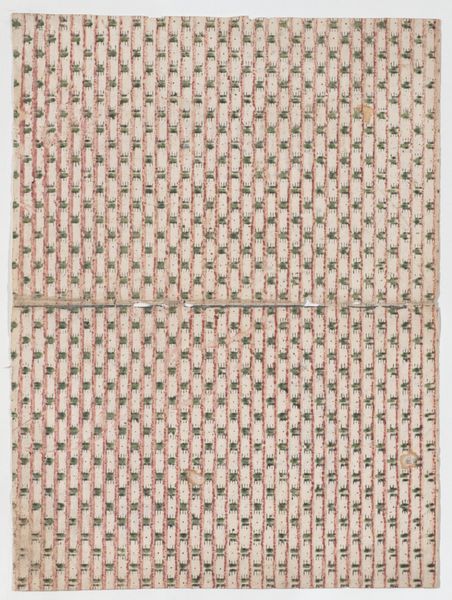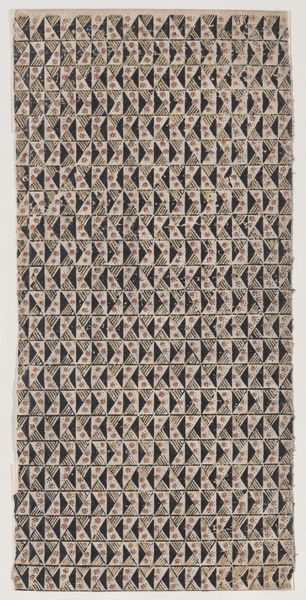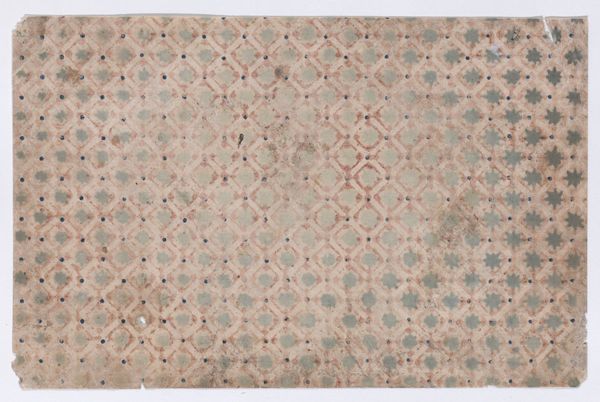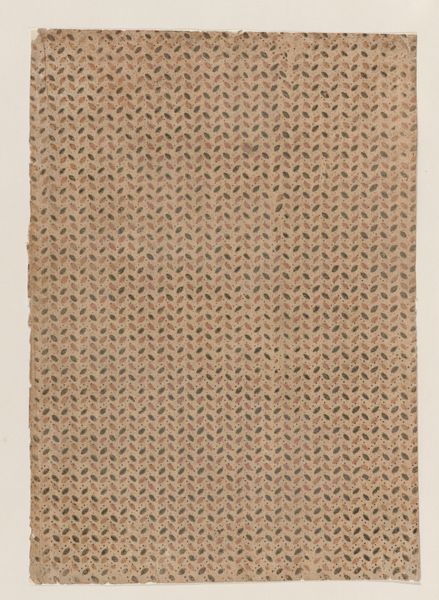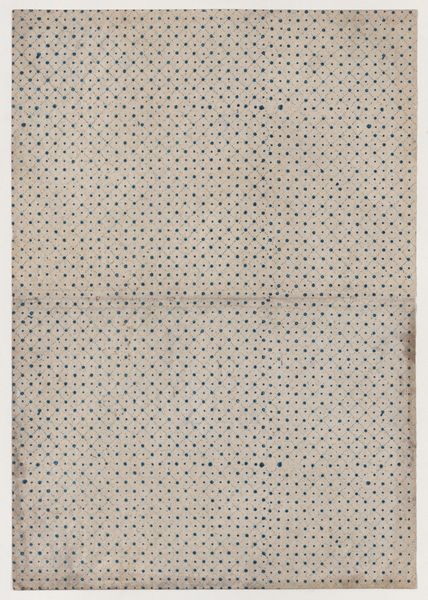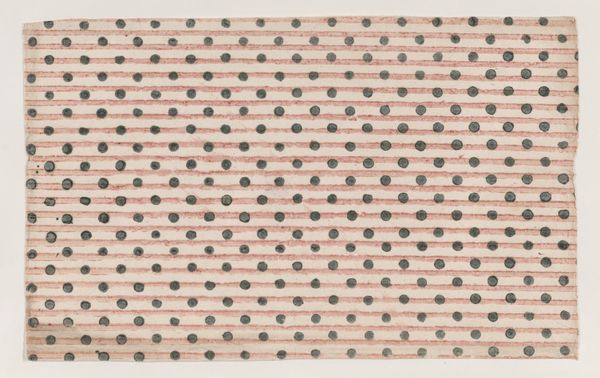
drawing
#
drawing
#
water colours
#
organic pattern
#
geometric
Dimensions: Sheet: 9 3/16 in. × 13 in. (23.4 × 33 cm)
Copyright: Public Domain
Curator: Before us, we have a "Book cover with overall zigzag pattern" that was created sometime during the 1800s, and resides here at the Metropolitan Museum of Art. It's rendered in watercolor, among other mediums, and attributed to an anonymous maker. Editor: The patina of time! What grabs me immediately is this subtle yet compelling rhythmic interplay. The repetitive zigzag feels almost hypnotic. There's a pleasing austerity in its minimalist rendering, too. Curator: Let's dive a bit deeper into this design. You know, the geometric elements suggest a sort of rigid order. It would make sense that there could be symbolic meaning in that sort of patterned regularity, for the artisan creating these objects during this time frame. Editor: I see your point, certainly one could analyze the structure itself through geometric semiotics; however, perhaps it points to the burgeoning industrial era of the time—where uniformity and mass production were becoming more of a social reality. Curator: Yes, but consider the social function this object likely had, being applied to a book—it has a relationship with broader trends. This object suggests to me that books themselves, then as now, signified learning and privilege for those who consumed this visual language. Editor: But also the burgeoning middle classes. Books at this time were getting less costly than previous centuries; so many social groups outside the elites had more access. You see a shift towards design for mass production becoming normalized, as such we see similar designs applied everywhere, from fabrics to ceramics to wall-coverings. Curator: All quite plausible, and as this piece is somewhat marred and clearly old, it may well speak to the durability and preservation of cultural values embedded in textual information—despite how our ability to hold, and transport books may change over time. Editor: Yes, and it allows us to reflect on the enduring power of design to communicate identity, and ideas about belonging within a very quickly modernizing society!
Comments
No comments
Be the first to comment and join the conversation on the ultimate creative platform.
